Books, magazines and various items on display provide visitors with a unique insight into the national sense of identity, Yang Yang reports.
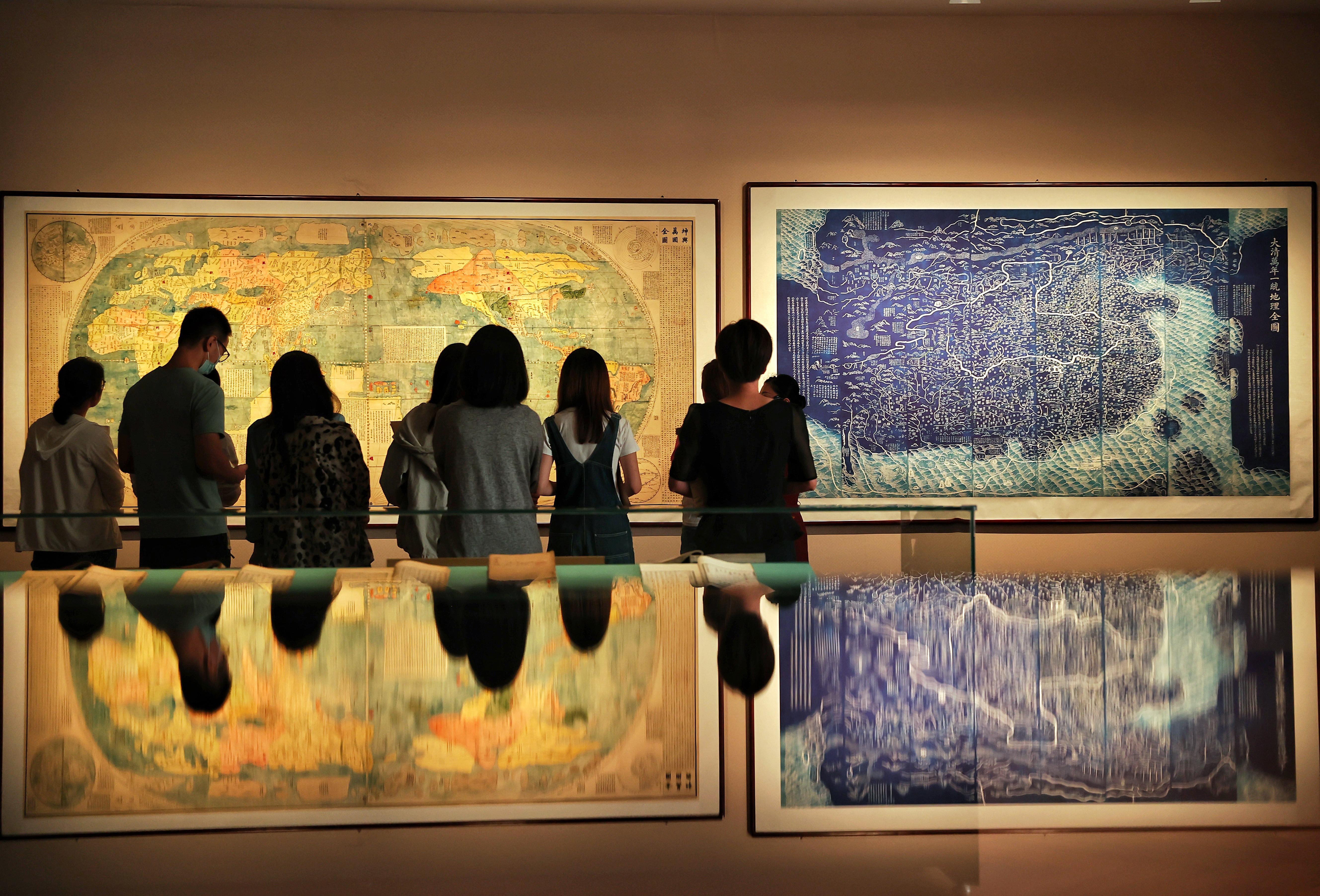 Wenhan Ge, the headquarters of the China National Archives of Publications and Culture, now holds exhibitions of important artifacts, including a Tang Dynasty (618-907) gilt bronze dragon. (JIANG DONG / CHINA DAILY)
Wenhan Ge, the headquarters of the China National Archives of Publications and Culture, now holds exhibitions of important artifacts, including a Tang Dynasty (618-907) gilt bronze dragon. (JIANG DONG / CHINA DAILY)
At Wenhan Ge (pavilion), the headquarters of the China National Archives of Publications and Culture, which sits at the foot of the Yanshan Mountains 40 kilometers from downtown Beijing, visitors can see a number of exhibitions featuring various precious "editions" that carry the gene of the Chinese civilization.
Inaugurated in July 2022, CNAPC consists of the headquarters Wenhan Ge in Beijing and three branches: Wenji Ge in Xi'an, Northwest China's Shaanxi province, Wenrun Ge in Hangzhou, East China's Zhejiang province, and Wenqin Ge in Guangzhou, South China's Guangdong province.
In a broad sense, ancient books, inscribed bronze ware, newspapers or food vouchers that carry distinct marks of different times, tapes, and even the first line of the code created to check people's COVID-19 test results, are all edition resources that record the historical process of a culture.
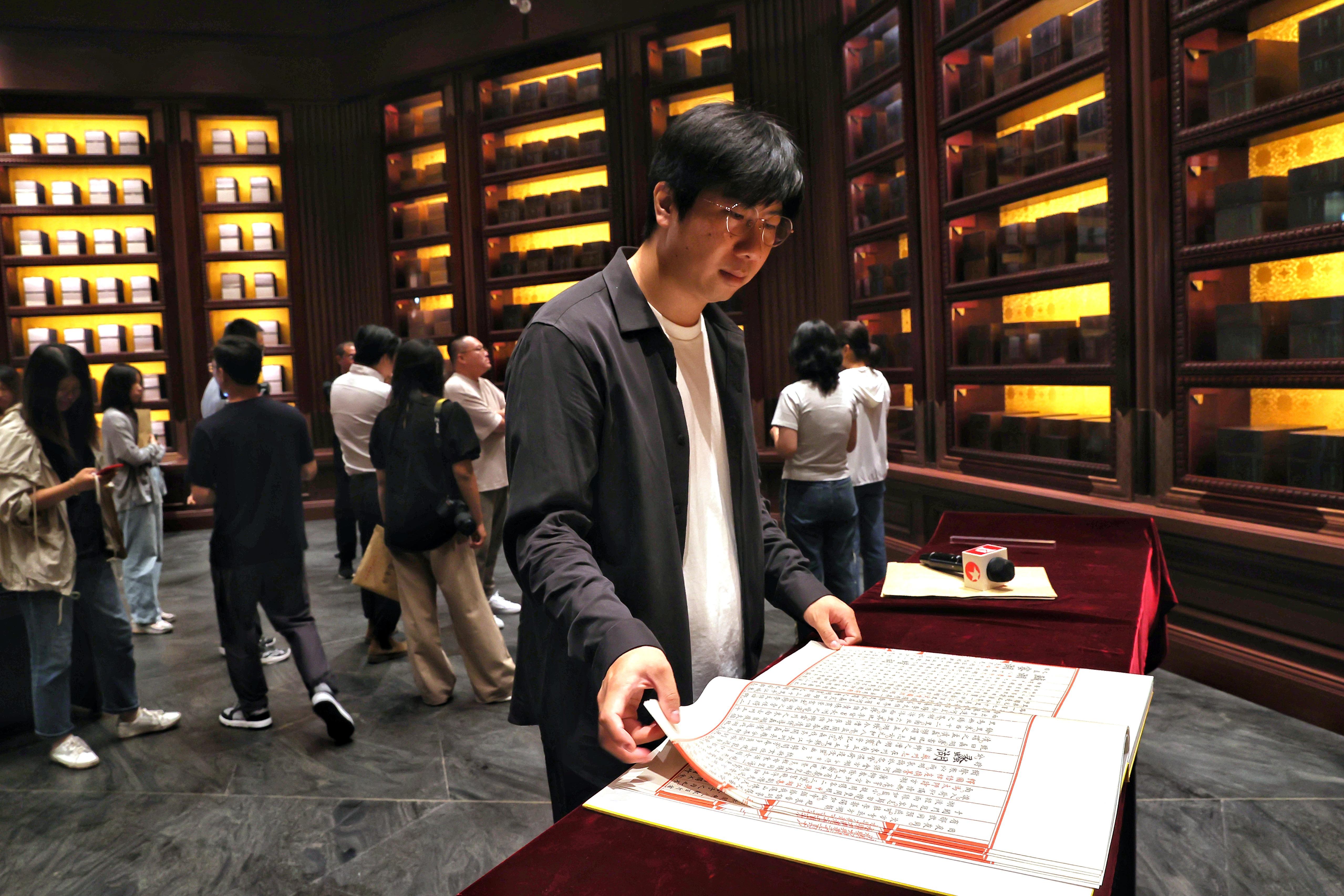 Wenhan Ge is home to some 25 million copies and editions of various publications, and the highlights on show include representative volumes of Yongle Dadian, an encyclopedia compiled in the 15th century. (JIANG DONG / CHINA DAILY)
Wenhan Ge is home to some 25 million copies and editions of various publications, and the highlights on show include representative volumes of Yongle Dadian, an encyclopedia compiled in the 15th century. (JIANG DONG / CHINA DAILY)
As planned, the archives preserve and carry forward the edition resources of China as a sort of seed bank for the genes of Chinese civilization. Now Wenhan Ge is home to some 25 million copies and editions of various publications.
The headquarters in Beijing was designed and built according to traditional architectural aesthetics, consisting of three compounds on different levels, with the dominant building, the Wenxing Building, at the first level, followed by the Wenhua Hall on the second and the Wenhan Ge on the third.
Compared with exhibitions such as The History of Chinese Currency in the Wenxing Building, the Inception of Chinese Civilization: Exhibition of Ancient Chinese Publications and Cultural Articles in Wenhua Hall, and the Light of Truth: Classic Archives Exhibition of Marxism Localization and Modernization in China in Wenhan Ge, the exhibition Banben Linlang (an exhibition of excellent book editions since the founding of the People's Republic of China in 1949) provides a feeling of familiarity to many visitors.
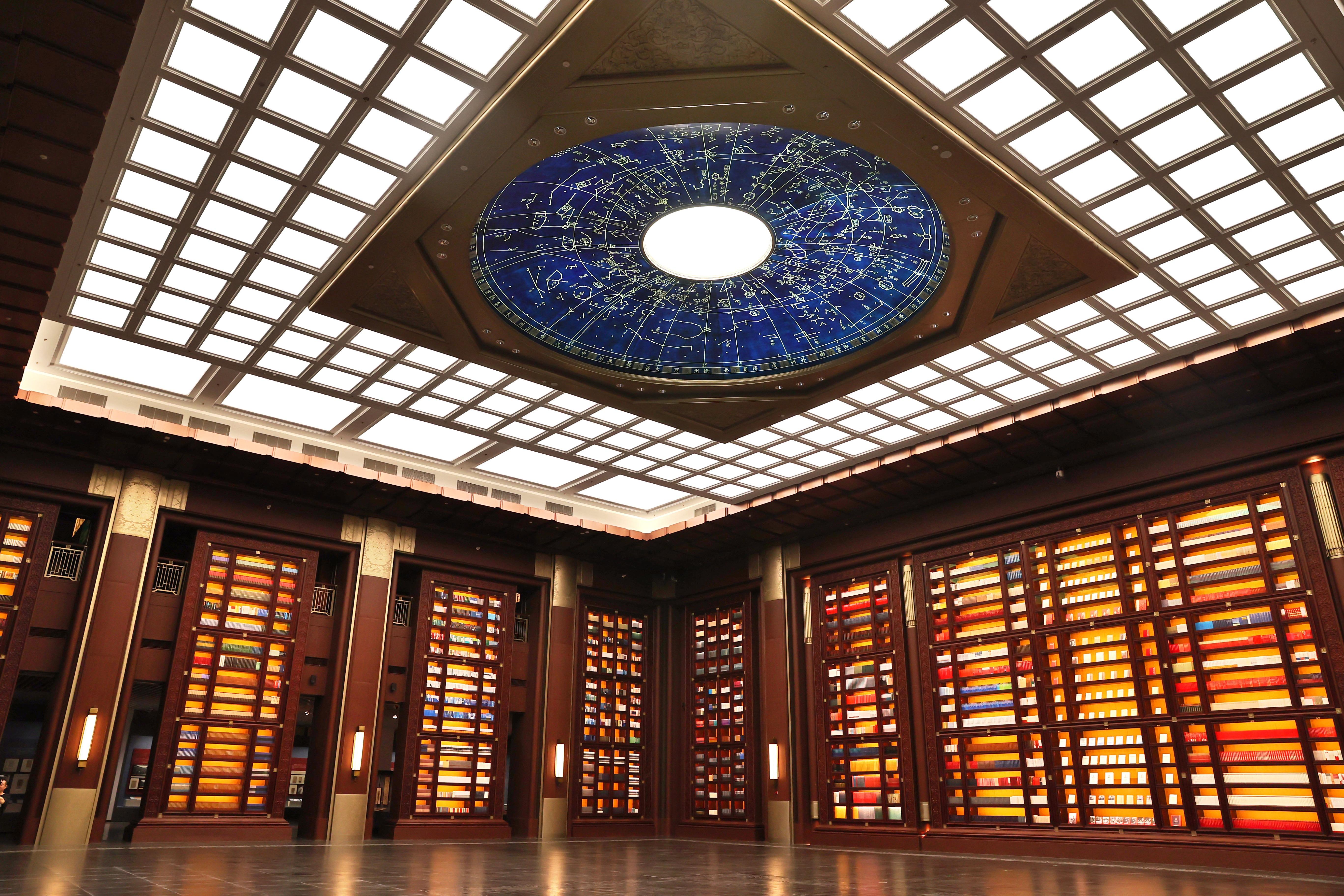 Wenhan Ge is home to some 25 million copies and editions of various publications, and the highlights on show include representative volumes of Yongle Dadian, an encyclopedia compiled in the 15th century. (JIANG DONG / CHINA DAILY)
Wenhan Ge is home to some 25 million copies and editions of various publications, and the highlights on show include representative volumes of Yongle Dadian, an encyclopedia compiled in the 15th century. (JIANG DONG / CHINA DAILY)
 Wenhan Ge is home to some 25 million copies and editions of various publications, and the highlights on show include representative volumes of Yongle Dadian, an encyclopedia compiled in the 15th century. (JIANG DONG / CHINA DAILY)
Wenhan Ge is home to some 25 million copies and editions of various publications, and the highlights on show include representative volumes of Yongle Dadian, an encyclopedia compiled in the 15th century. (JIANG DONG / CHINA DAILY)
The exhibition presents about 3,000 examples of dictionaries, textbooks for primary schools and middle school students, New Year pictures, picture books, posters, literary works, early issues of magazines, newspapers, tapes and vinyl records, among others, which have been released since 1949.
At the showcase of picture books, visitors can see five editions of Yuemu Cizi — an ancient Chinese story recounting the tale of the patriotic Song Dynasty (960-1279) hero, and how Yue Fei's mother tattooed characters on his back as a reminder of his duty to serve the country with utmost loyalty — including the first edition from 1958 and the second from 1983. Visitors can also see the manuscripts of numerous books.
Picture books, mostly the size of an adult's palm, were easily carried. Many are adaptations of novels, but are much easier to read, making such books extremely popular in the latter half of the 20th century.
"Among all the picture books on display, Yuemu Cizi was the most popular one, with more than 4 million copies sold by the People's Fine Art Publishing House," said Wang Liming, deputy director of the Publishers Association of China, in a previous interview with China Central Television.
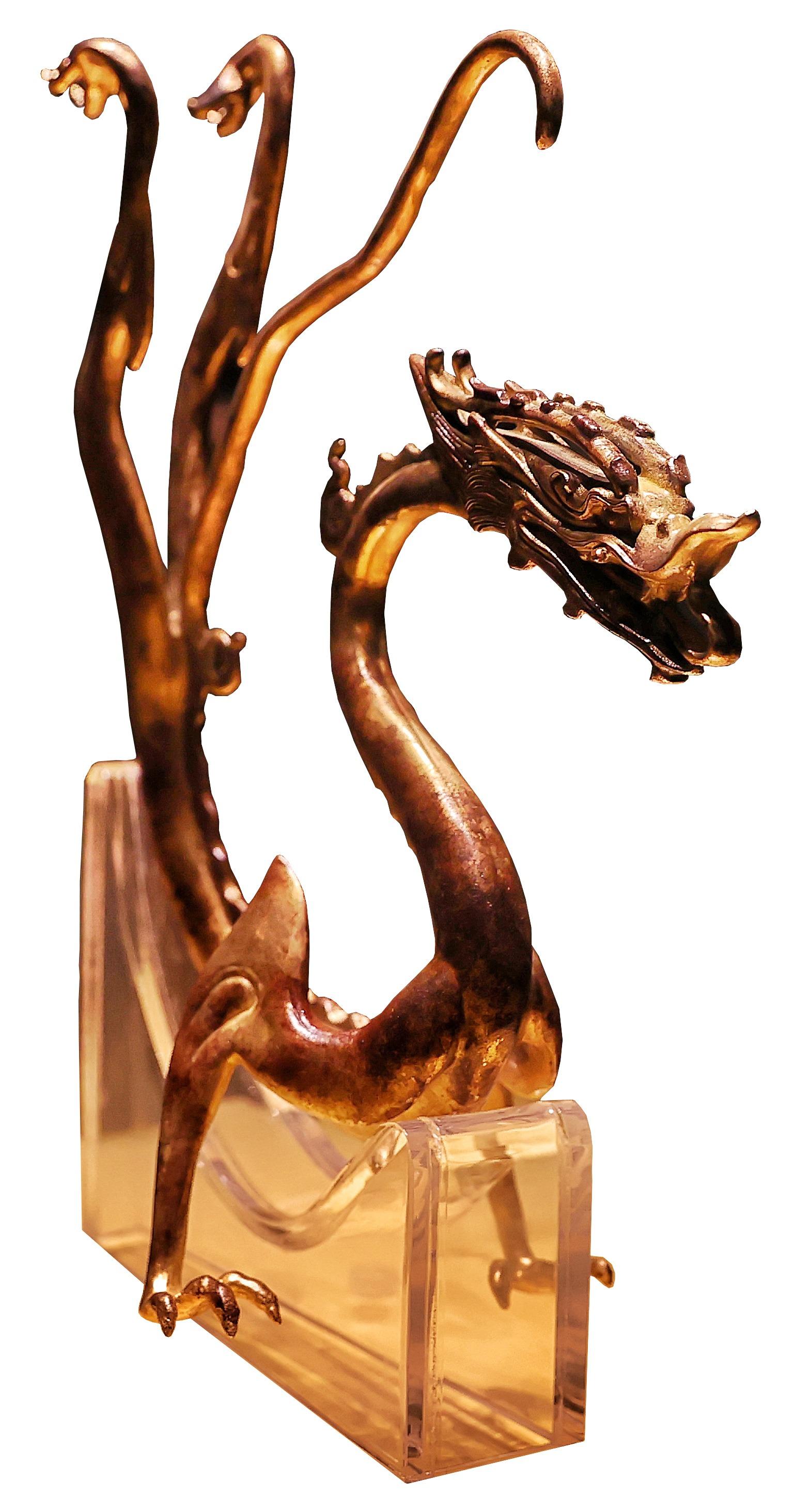 Wenhan Ge, the headquarters of the China National Archives of Publications and Culture, now holds exhibitions of important artifacts, including a Tang Dynasty (618-907) gilt bronze dragon. (JIANG DONG / CHINA DAILY)
Wenhan Ge, the headquarters of the China National Archives of Publications and Culture, now holds exhibitions of important artifacts, including a Tang Dynasty (618-907) gilt bronze dragon. (JIANG DONG / CHINA DAILY)
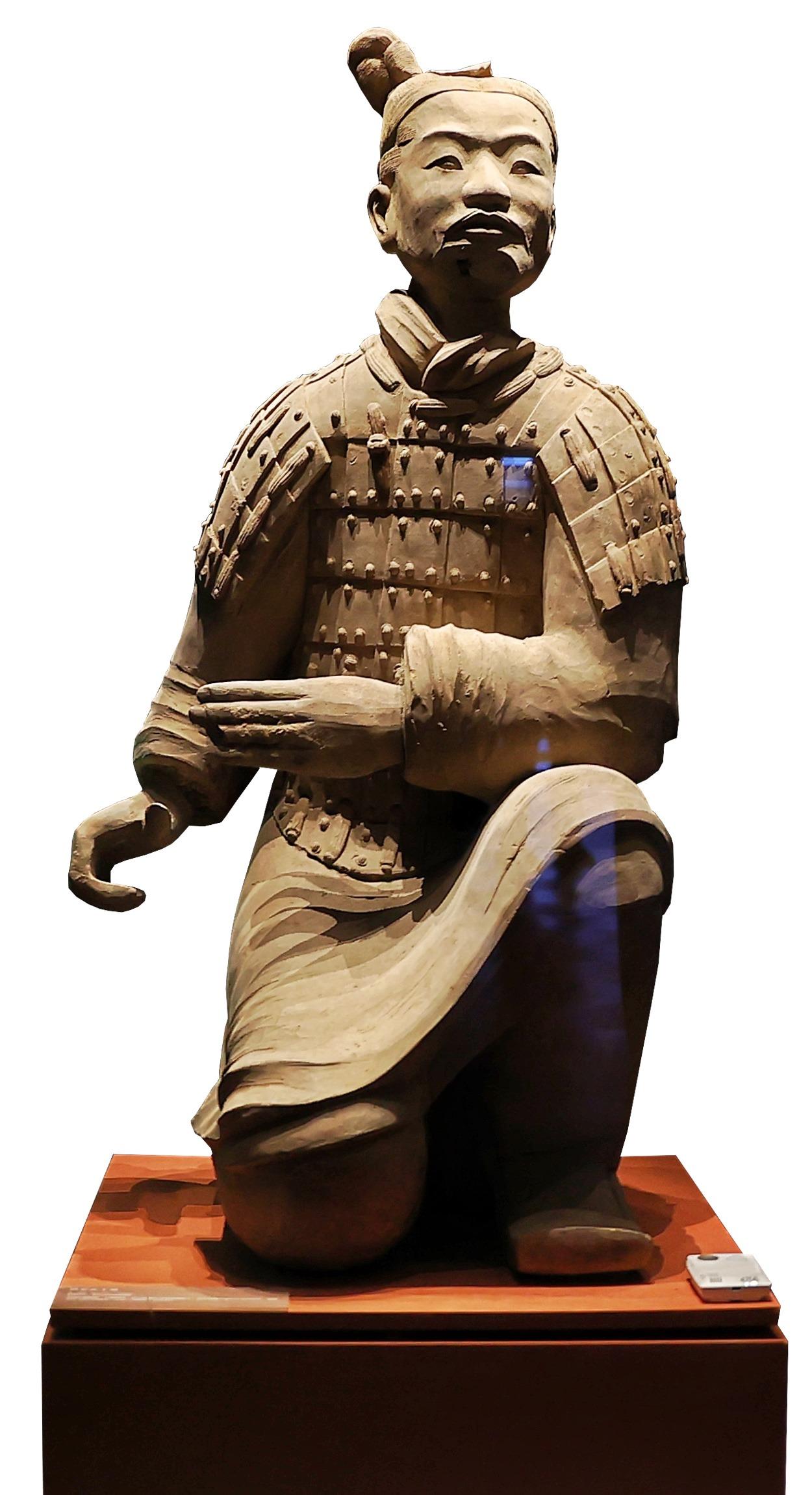 Wenhan Ge, the headquarters of the China National Archives of Publications and Culture, now holds exhibitions of important artifacts, including a Qin Dynasty (221-206 BC) Terracotta Warrior. (JIANG DONG / CHINA DAILY)
Wenhan Ge, the headquarters of the China National Archives of Publications and Culture, now holds exhibitions of important artifacts, including a Qin Dynasty (221-206 BC) Terracotta Warrior. (JIANG DONG / CHINA DAILY)
The happiness of people's life after 1949 is also represented in the 47 New Year pictures on show, including Xindede Huangniu (The Newly-Gained Cattle) created by Li Keran for the first Chinese Spring Festival after the founding of the People's Republic of China.
At the showcase of books for international markets, a bulky version of the picture book of Dream of the Red Chamber is spread out on the table. As one of the most popular Chinese books overseas, the picture book versions, translated into multiple languages, sold more than 20,000 copies.
As the first modern Chinese dictionary published after 1949, Xinhua Dictionary, in its 13 editions since it was first launched in 1953, is on display.
"In a comparatively concise manner, Xinhua Dictionary provides most user-friendly meanings, pronunciation, phrases and idioms of Chinese characters, which can meet the needs of people of all education levels," Wang says.
In 2016, Xinhua Dictionary entered the Guinness World Records as the world's most popular dictionary and the most popular book. By the end of July 2015, about 567 million copies of the dictionary had been sold since its initial release.
One of the secrets for its lasting popularity, Wang says, is its ability to remain current, with new, popular words regularly being added.
Contact the writer at yangyangs@chinadaily.com.cn


